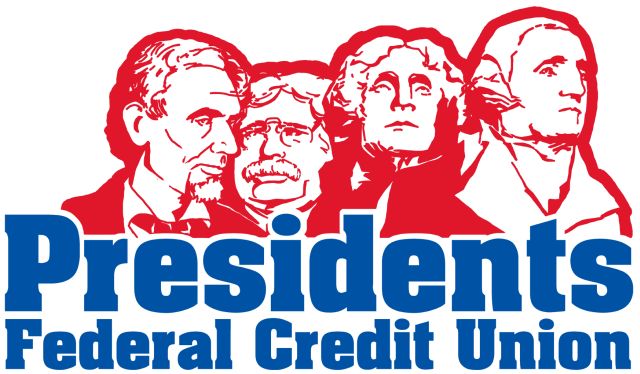From the outside, banks and credit unions seem very similar. They both offer checking and savings accounts, financial products like CDs and specialized accounts, and the rest of the services we’ve come to expect. You drive through teller windows or stop in at a branch, deposit your checks or withdraw money, and occasionally meet with personnel to discuss your financial needs. ATMs, debit and credit cards, loans and mortgages are all on the menu at most banks and credit unions. You give them your money, and they give it back. Right?
But under the surface, the two types of financial institutions couldn’t be more different. You may have noticed how excited and involved credit union (CU) members tend to be with their institutions, or the reputation CUs have for being small, regional or community-oriented. Perhaps you’ve heard about the intense lobbying the banking industry regularly levels against credit unions and wondered why it’s so aggressive.
There are benefits and costs to both operations, of course. But learning about the way credit unions work — and what sets them apart from banks — gives some interesting insights into the way we deal with money in this country. Most of us don’t use half the opportunities our financial institutions offer because it can be so overwhelming to make decisions about these things. For many of us, it’s hard enough just making sure our checks don’t bounce at the end of the month!
In this article, we’ll look at the basic business structure of banks and credit unions, the reason they do the things they do and the ways we use their services. Read on to learn how to choose between the two!
Banks
Fundamentally, a bank is a business that holds onto your money for you and uses it to create profits by investing that money or loaning it out to other customers. Most banking practices as we know them can be traced back to antiquity. The oldest bank in the world is the Monte dei Paschi di Siena, in Italy, which has been operating continuously since 1472.
When you make a deposit or buy a savings product, you’re essentially loaning money to the bank. It pays you back in interest for that loan, but rates can vary widely depending on the bank and the way you’re putting money in. Banks then lend that money to other customers and invest it, which is how they make their money. (Well, that and your ATM fees!)
A bank is a business like any other: run for profit, by people who answer to their investors. The more money they make for their investors, the happier they are. This means that all activities the bank engages in are expected to show a profit. Like any company, successful management of a bank means finding the best balance between customer care and profit. It wants your money, but you don’t want the bank to have it; you want the best interest for your deposits, but the bank wants to recoup that money any way it can. Because the global market changes so fast these days, the balance is trickier to find than ever. Often, customers pay the price.
Advertising, lobbying and risk assessment are the key expenditures banks must pay in order to stay on top of the competition. Advertising, of course, is essential to making us believe one particular bank is the best so that we will loan that bank our money. Lobbying, to make sure that governmental regulations don’t harm their profit margin or executive salaries, may mean a more competitive and innovative business environment. And risk assessment is the science of making sure that a bank’s loans and investments don’t turn around on them and harm the bottom line.
Credit Unions
America’s first credit union was founded in Manchester, N.H., in 1908. In that year, Congress passed the Federal Credit Union Act to help create credit unions all over the U.S. All credit unions’ membership is restricted to a certain group — members of an industry, a region or other category — but the wide array and variety of them makes it easy to find a credit union to join.
Credit unions are different from banks; when you deposit your money, you’re actually buying shares of the company. Rather than being a customer, you’re part owner: That’s why your account is called a “share.” There’s no board of directors or corporate interest controlling the credit union’s choices because members agree upon everything. Even the executives and directors are volunteers, elected by vote.
Credit unions aren’t run for profit, which means a lot of the concerns and scary decisions of larger banks never even come up. Of course, “not for profit” isn’t the same as a “nonprofit” organization since credit unions don’t rely on donations. Any profits are what allow credit unions to offer better rates on loans and savings, typically lower fees and other advantages. At the end of the year, any revenues beyond this are distributed to the membership through dividends.
Of course, all that good news comes with a few drawbacks. Because of the small, local nature of the credit union and its concentration on your community, it can be hard to get your money without visiting a branch. Traveling and even using ATMs around town can mean major fees. Depending on the credit union, new trends and services — like online banking and bill pay, or even debit cards — may become available much more slowly.
Still, if you like the idea of being a part of a cooperative effort, and the above inconveniences don’t apply to your lifestyle, joining a credit union can pay off. Not just in customer service and better financial rates, but in the community around you.
Bank or Credit Union?
While the differences between banks and credit unions are large, it’s often the case that our day-to-day experiences with both are pretty similar. While many people are losing faith in the big banks and their corporate interests, it’s true that credit unions often can’t compare in terms of technology, speed or convenience. So how do you choose?
Remember that all of these institutions are offering a service. Your needs should come first and foremost in making this decision, and you should feel comfortable making a change at any time to fit your needs. Best of all, you can always choose to split your accounts between multiple institutions.
Credit unions concentrate on savings and offer higher rates of return on both savings accounts and more complex savings products, like money markets and CDs. Thus, you could choose to keep your emergency savings fund and longer-term savings in a credit union, while still using a bank for your day-to-day checking and cash needs.
Often, you can even link your accounts, making it easier to transfer money out of checking and into a higher-rate credit union share account. By forming a relationship with the credit union and showing a stable account, you’ll be able to secure better loan rates down the road. Of course, if you think you’ll need overdraft protection on your checking account, you’d be better off keeping both savings and checking with the same bank.
Overall, the main question you should ask is what your current needs are. Are you living paycheck to paycheck? Many of us are, and for that reason, it could make more sense to simplify and go with a large bank that can quickly respond to your needs. If you’re trying to keep up with your savings — as we all should be — it may make more sense to “pay yourself first” by using a share account that’s not as easy to get to. But if your income is stable and your spending doesn’t really fluctuate from month to month, a credit union is your best option for watching your balance continue to grow.
Cincinnati Credit Union – Presidents Federal Credit Union (FCU) is federally insured and backed by the full faith and credit of the United States government for all accounts up to $250,000.00. We have over 60 years of experience and offer the best values with friendly customer service.



Recent Comments